Shopify vs. Amazon: Which is better to sell on?
Shopify and Amazon are two of the biggest platforms in the ecommerce space, and each of them comes with an abundance of tools and features to help you attract and convert customers. But that’s where things get conhttps://www.shopify.com/enterprise/what-is-multi-channel-retailingfusing: when trying to pick between them, where do you even start?
If that isn’t complicated enough, Shopify and Amazon have very different setups: one is a dedicated ecommerce platform, and the other is an online marketplace. As a result, how they facilitate merchants is entirely different.
In this post, we’ll do a detailed Shopify versus Amazon comparison to help you choose the right solution for your business. Specifically, we’ll compare the two platforms in eight categories:
- General overview
- Ease of use
- Design flexibility
- Ecommerce
- Marketing features
- Payment options
- Pricing and value
- Customer support
Let’s dive in.



General overview
Before we get into the nitty-gritty, let’s look at a quick overview of Shopify and Amazon.
Shopify is a specialized ecommerce platform that gives you the tools to build your own online store. It’s well known for its design flexibility and online sales features. Building with Shopify is like purchasing a blank canvas to create a brand image on. You get your own space and can use the built-in theme editor to customize your website.
→ Click Here to Launch Your Online Business with Shopify
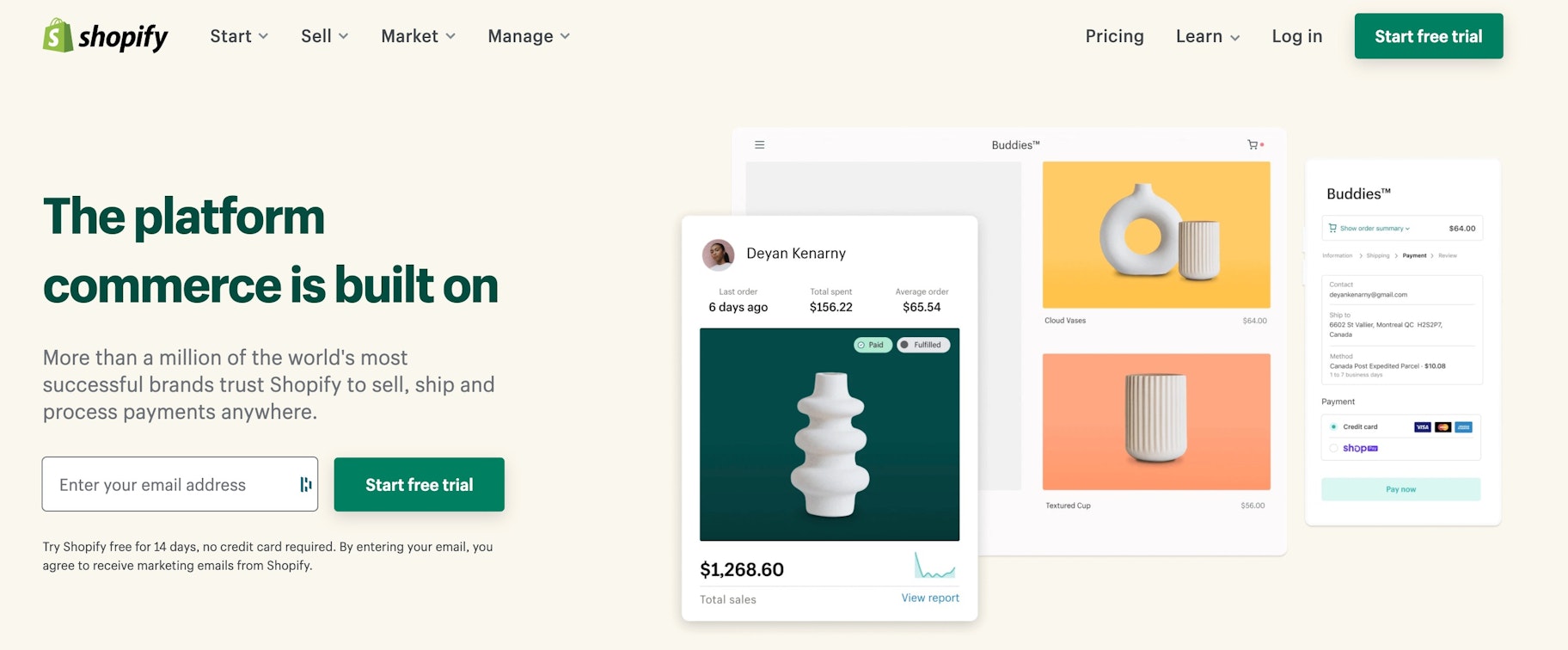
Amazon is a marketplace that lets you sell alongside other merchants. It accepts both B2C and B2B sellers and offers more visibility for your products. However, it doesn’t offer the same level of customization as Shopify, making it challenging to differentiate your business from others. That said, good reviews and competitive pricing can help you stand out on Amazon’s marketplace.
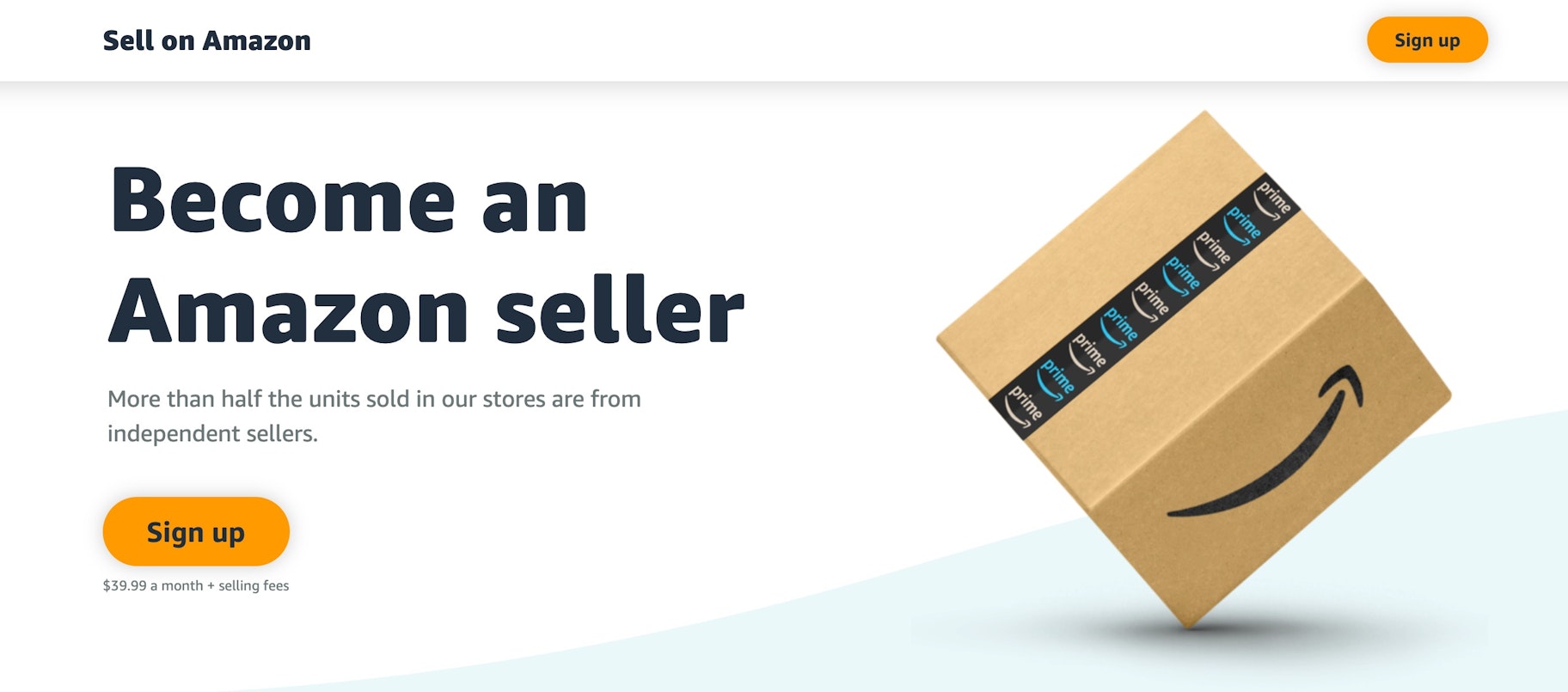
Now that you’ve had a look at each platform, let’s see how they stack up in different categories.
Ease of use
A complicated ecommerce platform is frustrating and time consuming to deal with. With both Shopify and Amazon, you don't need any coding knowledge or technical skills to build your online presence.
Shopify is a hosted ecommerce solution, so you don’t have to deal with complicated things like hosting before you can get online. After signing up for a Shopify account, you’ll be able to add products to form the foundation for your store.
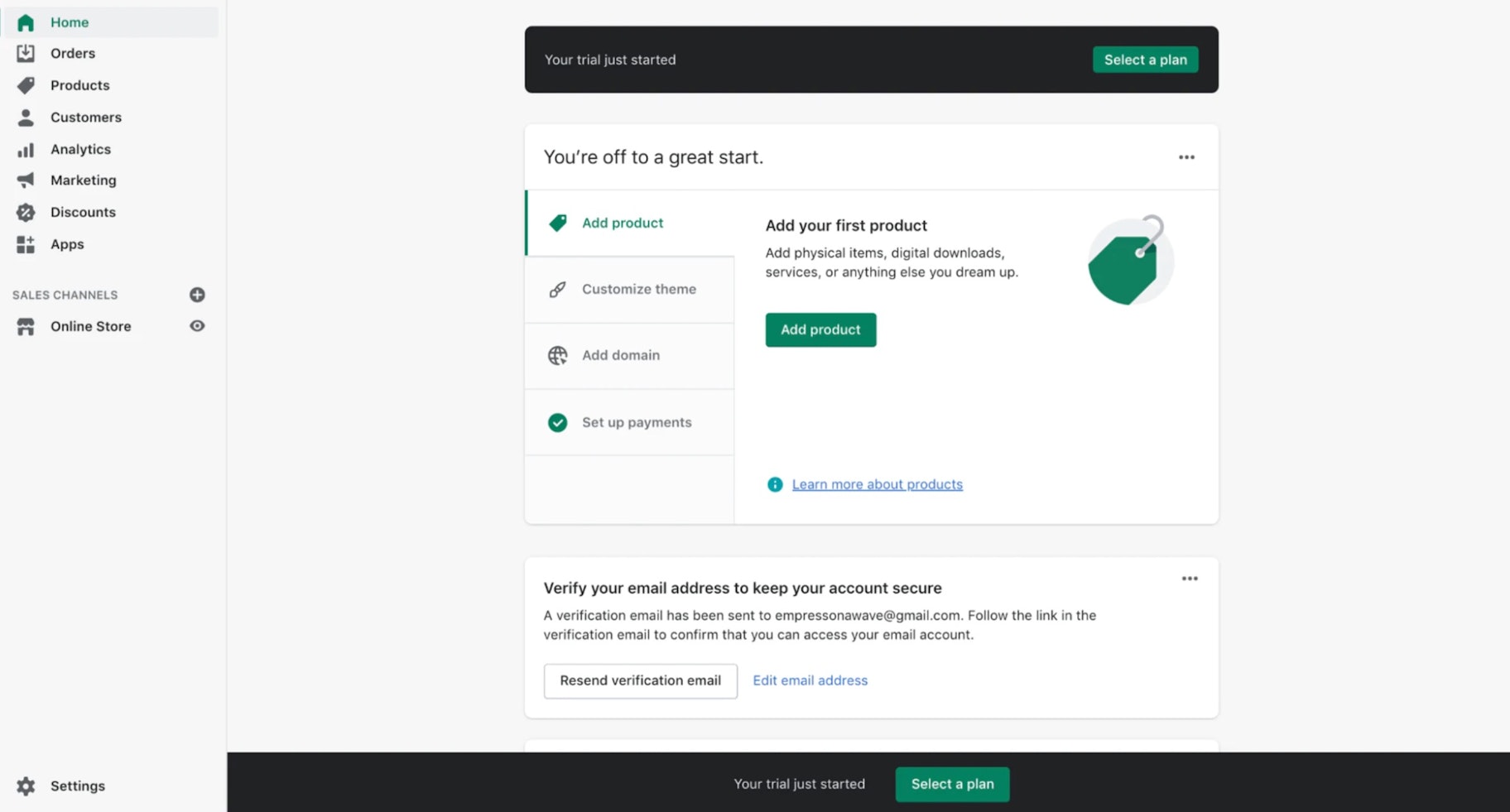
Shopify also offers an onboarding wizard to help you choose a theme, add your products and content, and publish your store. And once you’re set up, you can use Shopify’s tools to make your life easier. The platform has tools for tracking your inventory and calculating taxes, and offers tons of apps to streamline your business.
With Amazon, there’s very little building to do. You won’t have a full store to build when selling on Amazon—just a few customized product listings where you can share information about your listings. Just follow Amazon’s set-up guidance to register your store, then upload each product you want to sell, entering SKU, product classifiers, and details as you go.
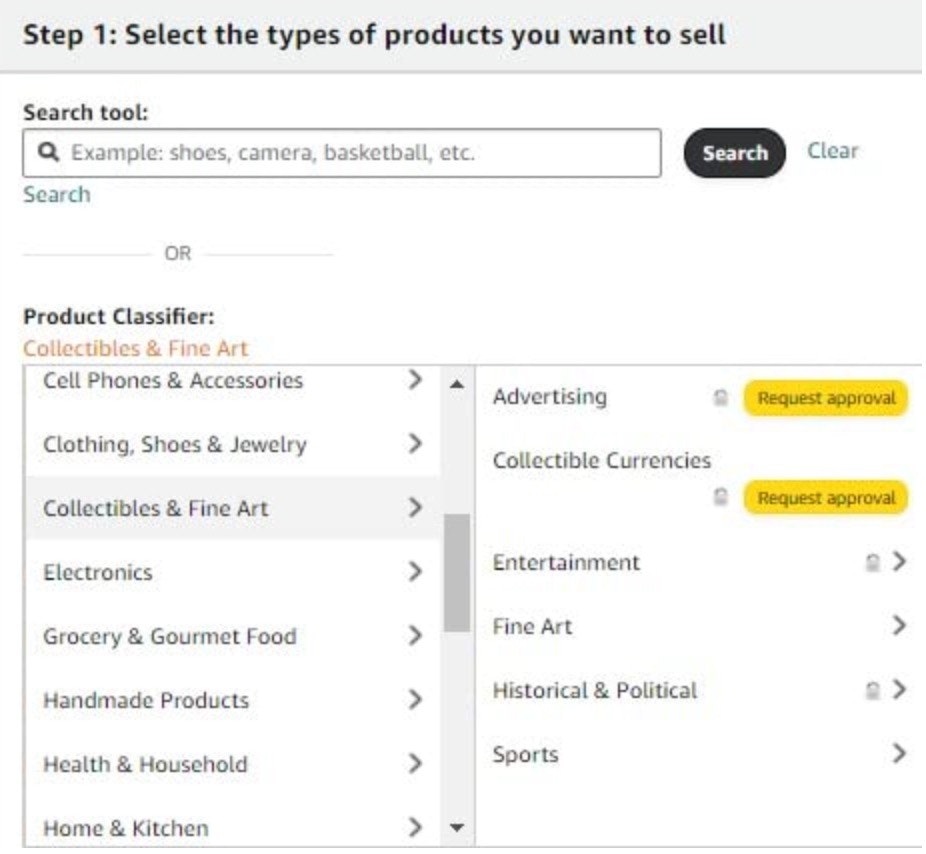
Once your listings are ready, you can simply publish them to the Amazon marketplace and customers will be able to start making purchases immediately.
So,which platform is easy to use? I’d say both. Shopify is remarkably beginner-friendly for anyone looking to build their own online store, whereas Amazon offers a simple route to selling online with a basic marketplace storefront.
Design flexibility
The design of your website can influence how customers feel about your brand and how likely they are to buy. Both Amazon and Shopify make it simple to optimize your pages to capture customer attention, but Shopify is far more flexible with its design options.
With Shopify, you can build an entire online store however you like. You can start with one of the pre-built templates offered by Shopify or design something from scratch. Paid and free themes make it easy to find something suitable for your niche.

Shopify’s drag-and-drop editor also gives you full control over how each page of your website works. You can change the layout on different pages, add widgets, and upload your own content for your About page, Contact page, and homepage.
Amazon isn’t nearly as flexible as Shopify for branding and customization purposes. There are no themes or templates—your product listings look the same as the others already on Amazon. You can upload your own images to product listings, add bullet points, and write an item description, but that’s about as far as the flexibility goes.
In a nutshell, Shopify beats Amazon for design. Its theme editor and templates let you customize your store however you want. Amazon offers less design flexibility, making it difficult for sellers to create a unique brand image.
Ecommerce tools
While design and ease of use matter, it’s the ecommerce features that determine your ability to make sales.
By default, Shopify offers more ecommerce tools and features than Amazon, simply because it’s a pure-play ecommerce company.
Here are just a few tools you can access via Shopify:
- Drag-and-drop store builder
- Inventory and order management
- Abandoned cart recovery
- Multichannel selling
- Automatic tax calculation
- Customer profiles and accounts
- Shopify Point of sale (POS) app
- International selling
- Various payment processors
Shopify also lets you offer free shipping and get discounted rates from your preferred carriers. You can even buy and print shipping labels directly in Shopify to get orders out quickly.
Moreover, Shopify offers a variety of dropshipping apps. These apps let you sell online without inventory by connecting you with suppliers who are ready to store and ship items directly to your customers.
So, how does Amazon compare?
Amazon also offers plenty of tools to help you sell online. You can get sales through:
- Promotions
- Gift options
- Targeted adverts
- Branded content
Amazon has a global selling program you can join to create international product listings and expand your reach.
Furthermore, Amazon offers a fulfillment program that works exactly like dropshipping. Called Amazon FBA, the program lets you delegate the storage, packing, and shipping of your items. You send the products to Amazon, which then packages and ships them to customers once they get sold. You can learn more about the process in our Amazon dropshipping guide.
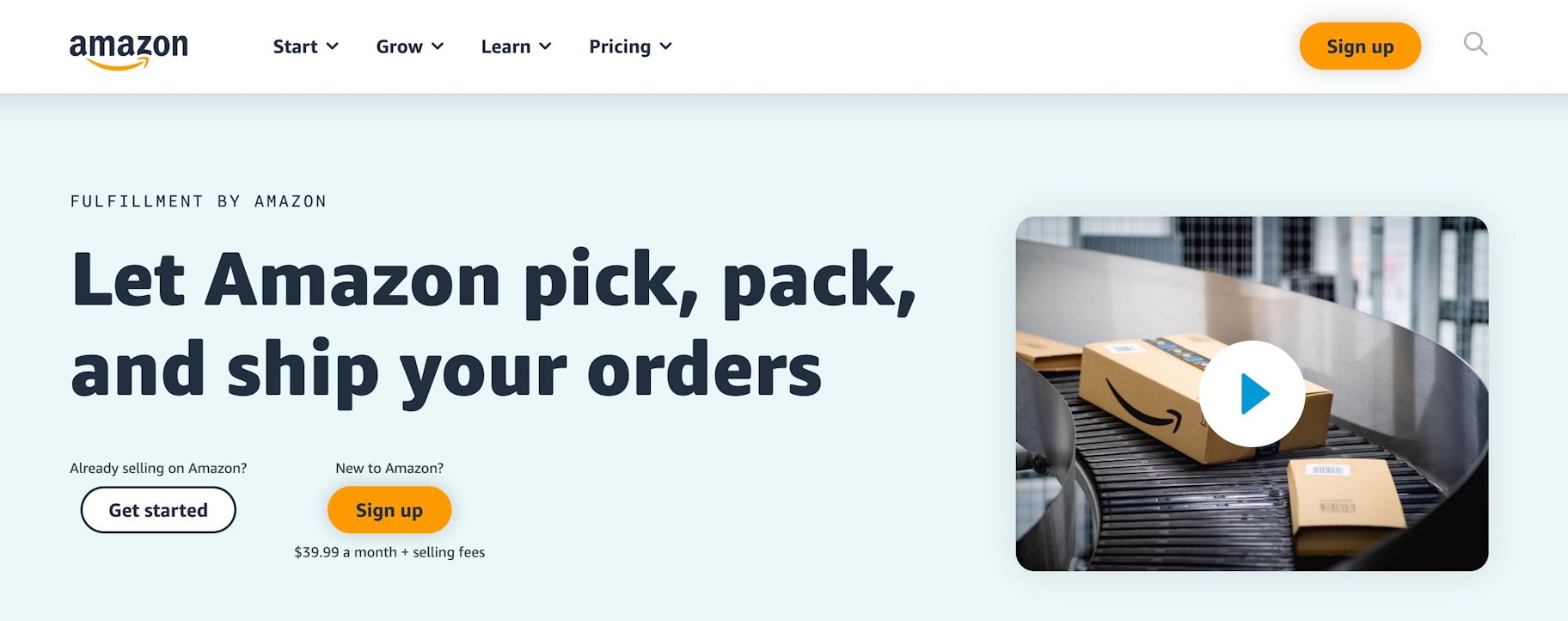
However, you pay a fee to use Amazon FBA, whereas with Shopify, you can use tools like DSers free to dropship items to your customers.
Overall, Shopify has a much more sophisticated range of ecommerce features than Amazon. Its dropshipping integration also makes it a better platform for those looking to reduce costs related to inventory storage. Amazon offers a decent range of sales tools, but they aren’t quite as powerful as Shopify’s.
Marketing features
Shopify offers a greater range of marketing features than Amazon.
You can use Shopify’s SEO tools to increase your website’s visibility in search engines. Shopify lets you add descriptions and titles for your products, images, and pages.
Shopify also offers a native email marketing solution called Shopify Email. It saves you time and effort by pulling your store colors, products, and logo into your templates. You can use the feature to send welcome emails, re-engagement emails, confirmation emails, and feedback emails on the fly.
Shopify’s apps give it a huge advantage from a marketing perspective. The Shopify App Store is home to a range of tools for creating landing pages, sales strategies, and social media connections for grabbing attention online. Shopify even has native integrations for Facebook and Instagram, making it ideal for multichannel selling.
Amazon is a little trickier to master from a marketing perspective than Shopify. You’ll need to learn how to optimize your pages for Amazon’s search engine to stand out online, which requires time and effort.
On the plus side, Amazon does support its sellers in finding customers as quickly as possible. Amazon DSP is a demand-side platform that allows you to buy audio, video, and display ads on and off Amazon. You can also experiment with video advertising through Amazon Live, which supports direct streaming to your audience.
Payment options
To sell online, you need to choose and set up a payment gateway first.
Shopify has its own in-house payment gateway, called Shopify Payments, which eliminates transaction fees for your business.

If you don’t use Shopify’s in-house system, you still have over 100 different gateways to offer, including PayPal and Apple Pay. However, these alternative payment methods have varying transaction and credit card fees to consider. Shopify also supports alternative payments like cryptocurrency and cash on delivery.
Amazon uses Amazon Pay as its primary payment gateway, which allows for credit and debit card transactions, though there’s no PayPal option.
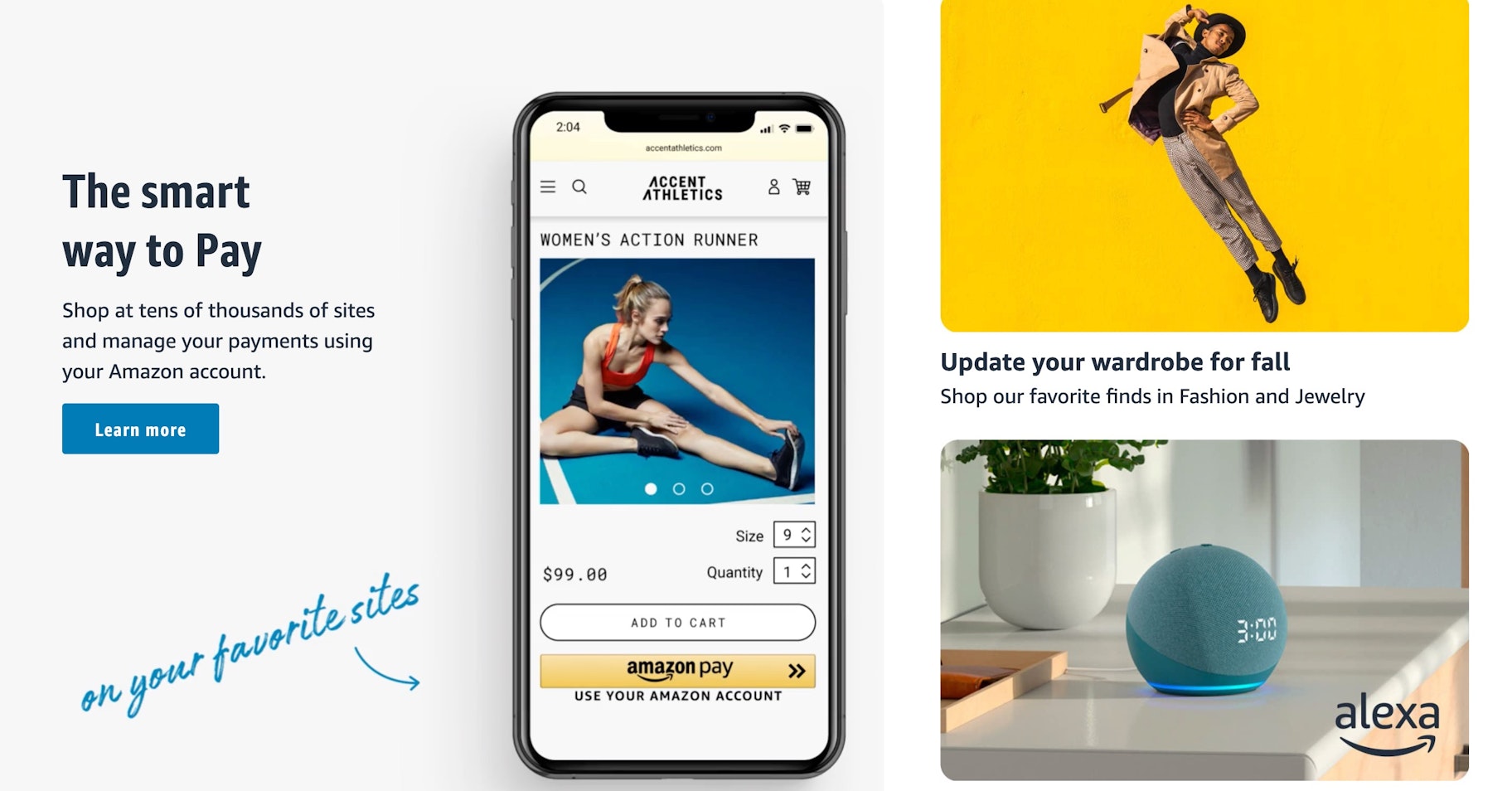
There are fees to consider with Amazon’s payment options, which vary depending on whether you have a Professional or Individual account. Individual accounts pay $0.99 for each product sold, while Professional account holders need to consider transaction fees, referral fees, and sometimes fulfillment fees too.
So if you want to give multiple payment options to your customers, Shopify is arguably the better choice. You also get to save transaction fees if you’re using Shopify Payments to process orders—the company-owned gateway supports most major currencies, including US dollars, euros, Australian dollars, Indian rupees, and renminbi.
Pricing and value
The decision between Shopify versus Amazon also comes down to your budget.
For Shopify, you can choose from four pricing plans:
- Basic Shopify: $39 per month
- Shopify: $105 per month
- Advanced Shopify: $399 per month
- Shopify Plus: $2,000 per month
Each plan offers a different set of features, but you should find everything you need to start selling online on the Basic plan. Plus, Shopify lets you expand the functionality of your store via apps that work on each plan.
Shopify also offers a free trial you can use to test out the platform before investing in it—no credit card is required to try it.
In contrast, Amazon offers two plans:
- Professional: $39.99 per month + extra selling fees (varies by product)
- Individual: $0 per month + $0.99 per item sold + extra selling fees (varies by category)
The Individual plan is ideal for sellers planning to sell less than 40 products per month. It lets you add new products to the Amazon catalog and use Amazon FBA (for an extra fee) if you need to.
Based on the costs, neither platform is expensive, making each a decent choice for individuals and businesses just starting out with ecommerce.
Customer support
You need access to support staff and helpful resources in case anything goes wrong.
Thankfully, Shopify offers unlimited 24/7 customer support via phone, live chat, and email. You also get access to a comprehensive help center and a community forum, where you can share your concerns and hear from other Shopify users.
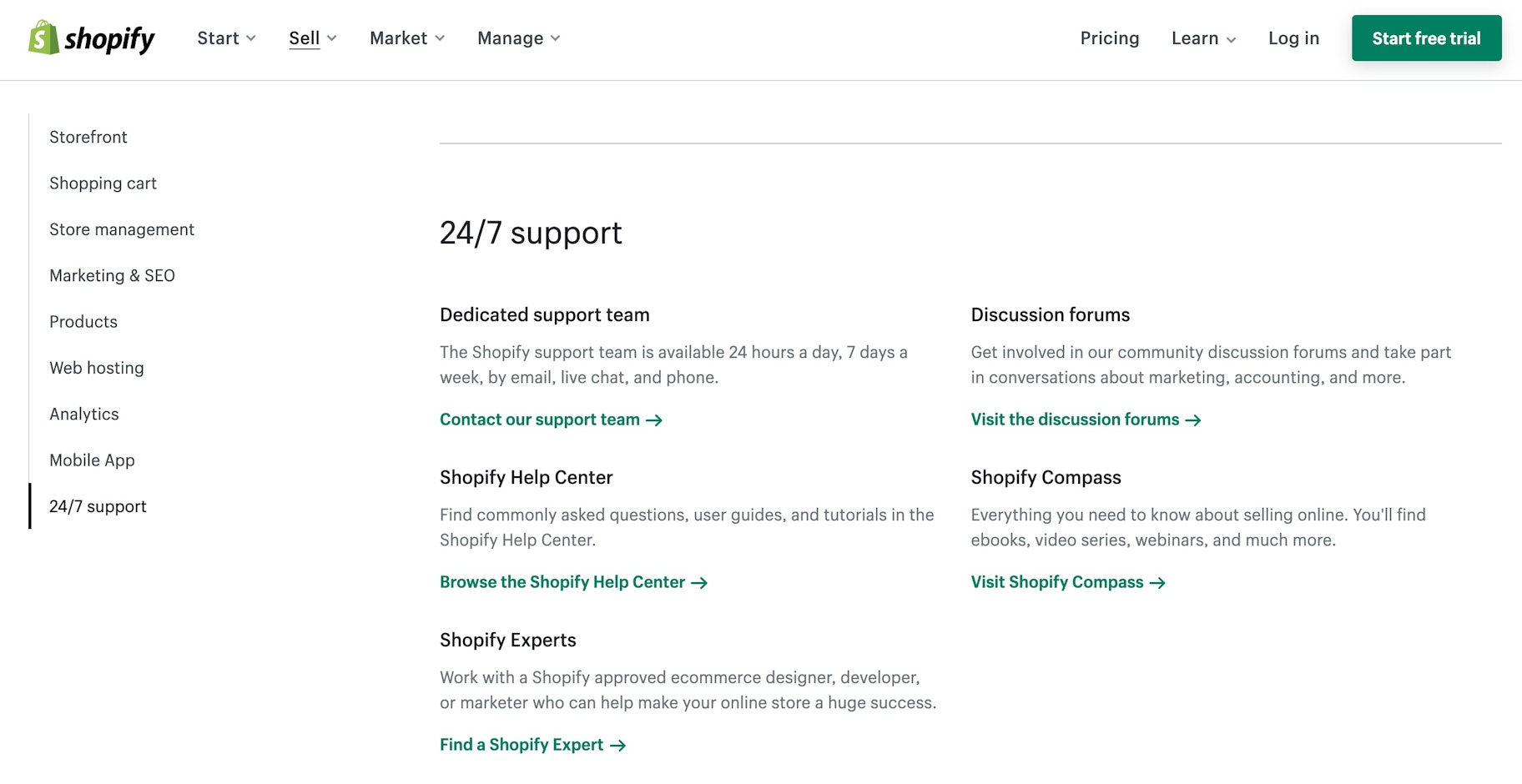
Amazon also has an essential support system. However, it’s not the most comprehensive or easiest to use. There is phone support, where you request a call and wait to get assistance, as well as community forums where you can ask questions. But none of the options are simple to navigate.
Shopify’s support is much easier to access than Amazon’s, and its help center is jam-packed with helpful guides to make your life easier.
Which is best for my business: Shopify or Amazon?
Shopify and Amazon are both incredible platforms with plenty of tools and affordable pricing.
So, which one should you use?
Here’s our take: If you want to focus your resources on building and growing an online brand, use Shopify. It gives you a range of customizable templates and styling options, and offers free tools, like a business name generator, to help you create a strong brand identity.
On the other hand, if you’re working on a small scale and not ready to establish a brand yet, opt for Amazon. Although you’ll face some restrictions and pay higher fees, you’ll also get a ready-made platform visited by millions of people every month.
It’s worth mentioning that you don’t necessarily need to pick between the two. With the Shopify Amazon integration, you can sell on both platforms via your Shopify store. We recommend using this option so you can reap the benefits of multichannel selling and have control over your brand.






